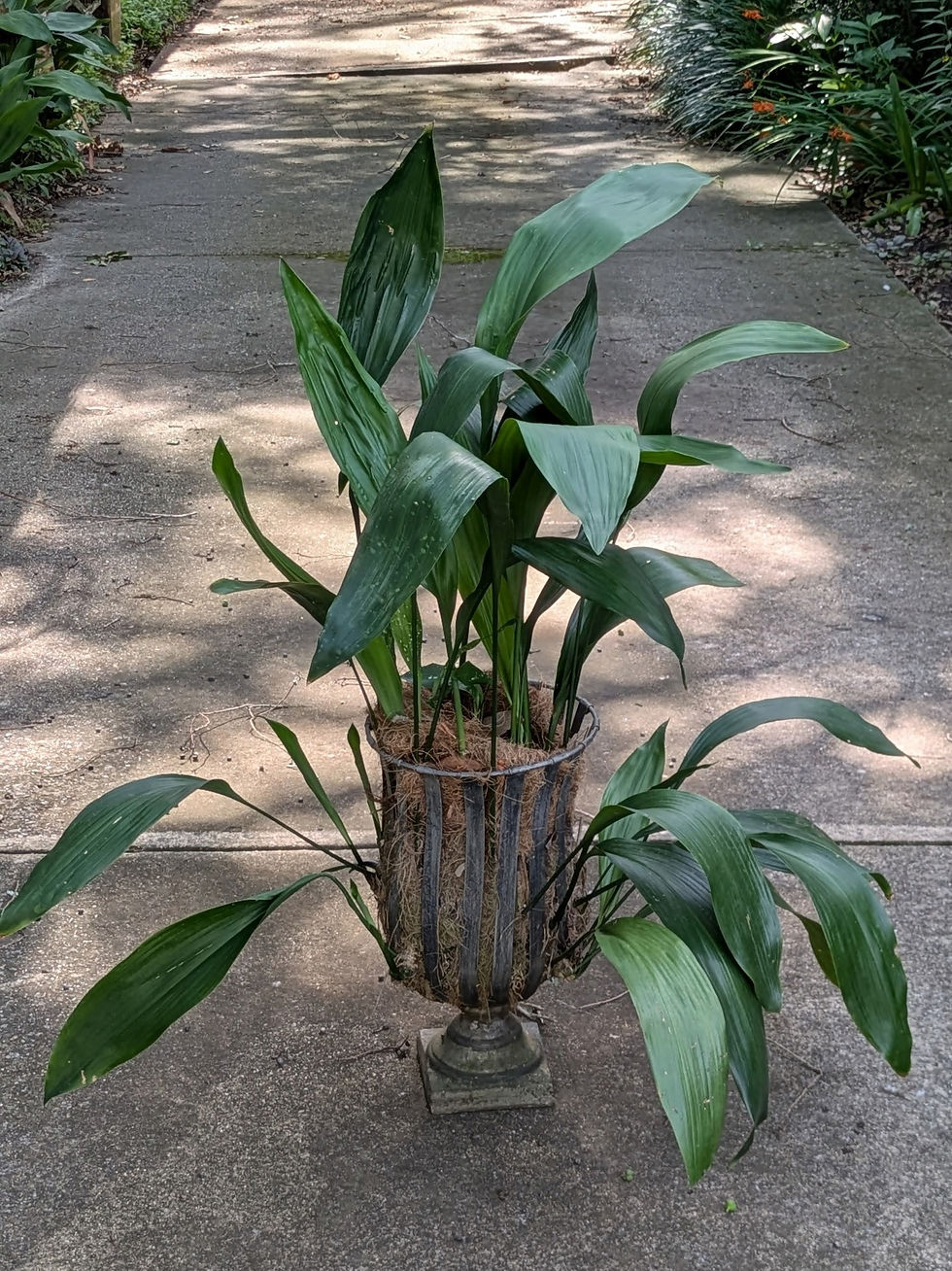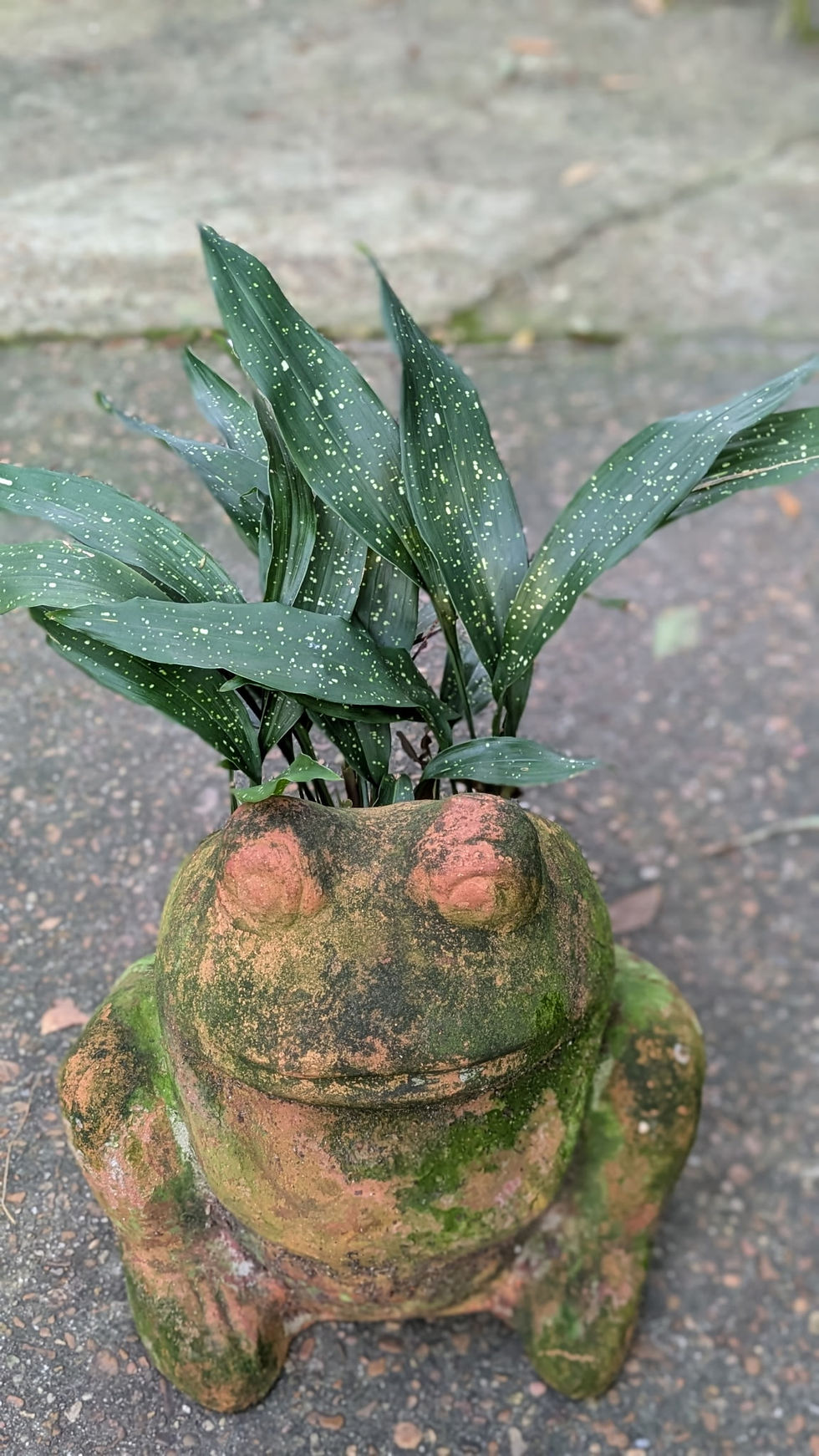Ask a Master Gardener: The Oft-Maligned Cast Iron Plant
- Jennifer McDonald
- Jul 11
- 3 min read

By: Theresa Davidson, Mobile County Master Gardener, www.mobilecountymastergardeners.org
Call the Cast Iron Plant by its botanical name, Aspidistra (as-pi-DIS-trah) and you’ll fall in love with it and its showy relatives, Variegata, Milky Way, and Spek-tacular.
As a Master Gardener, one of the first things we learn is “Right Plant, Right Place”, which becomes our mantra. It applies to every plant we grow—Before you plant, read the label. What is the plant’s mature height/width? Don’t plant a Chinese Lorapetulam near your home; it will soon tower over the roof and intrude into the side of your home and lawn. Don’t plant that seedling live oak between the street and the city sidewalk; one day its massive roots will buckle the cement, creating perilous obstacles for your walk in Midtown and Downtown. Check the label again. Does the plant thrive in sun or shade? A sun loving shrub planted in the shade will be spindly, blooming less or not at all. A shade-loving plant in full sun will burn or even die.
I think those who consider Cast Iron Plant a weed might not have read the label. It is a shade-loving plant, even deep shade. If planted in full, direct sun, its dark green, lush leaves scorch, become brown, shrivel, and fray. Indeed, it just might look like a weed!
But, there’s a fix. Just dig it, preferably after a rain for easier digging, and move it to a shady spot. Clean up each clump that you dig. Cut the stem at soil level; I call it, “giving the plant a haircut”, a technique I recommend for many plants. Cut the stem low; if not, the new leaf will grow out without its pointed tip. Once the plants are growing well again in shade, you will only need to prune the occasional unsightly leaf.
If moving the bed isn’t an option or perhaps it’s a rough looking bed, even in the shade, just prune it. Usually, totally brown leaves will pull out easily. For the raggedy leaves still growing strong, use your pruner, going all the way to the base to make your cut.
If your bed of Cast Iron Plant has suffered longtime neglect, you can use another technique, regenerative pruning, a HARD pruning that promotes new growth. Best done in spring, give the entire bed a low cut; however, be prepared for a soil-only bed for a few weeks while the leaves make their return. (Or, cover the bed with my favorite mulch, pine straw.) I saw this technique demonstrated at the Master Gardener Dream Garden, located on the grounds of the Mobile County Extension Office. We MG’s were spring cleaning the Garden and discovered an overgrown Aspidistra mess. One of the MG’s grabbed her trusty, SMALL chain saw and leveled that bed in a flash, to my astonishment.
If you decide to move the Cast Iron Plant, you have many options. Take it to a flower bed. Its tall, dark leaves provide a backdrop for lower growing bedding plants. Do you have a large tree, surrounded by bare dirt, where nothing will grow? Try the Iron Plant.
It’s tough, as its name suggests, and drought tolerant. But, don’t stop there. Put them in containers, large and small. Let them multiply and pack the container, becoming more beautiful each successive year. Or, let the iron plant be the “thriller”, adding your “spiller” and “filler” for a great container arrangement. Put them in hanging baskets. Did you know they are also considered a house plant? Take some inside. And, finally, use them in floral arrangements! Google “floral design with aspidistra”!
Now that you appreciate this evergreen (another plus) standard, look for its relatives: Variegata, cream and green stripes; Milky Way, 18” in height, dark green with creamy yellow spots (stars); and Spek-tacular, a Milky Way look-alike but with a height of 36”, covered with yellow specks.
Oh, did you know they bloom?! Moving to Midtown in 1986, the Cast Iron Plants were already in my yard. Only last year in early spring, clearing away a buildup of leaves around my plants, did I discover blooms, located at the very base of the plant! I wasn’t even sure it was a bloom. What did I do? I posted a photo on the Master Gardener Facebook page and got my answer.
Remember, it’s not JUST a Cast Iron Plant; it’s ASPIDISTRA!








Comments